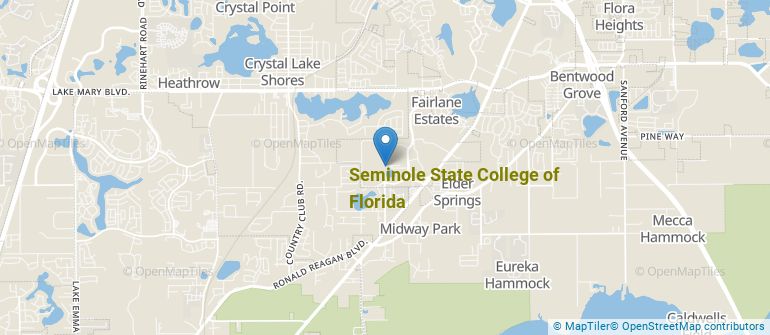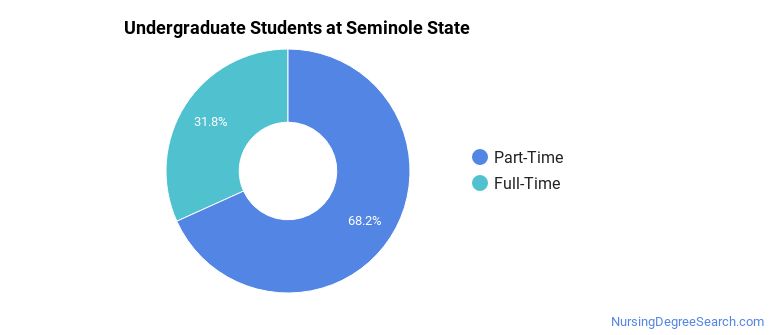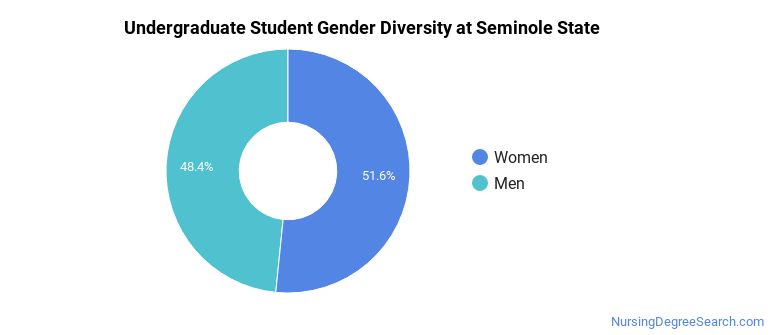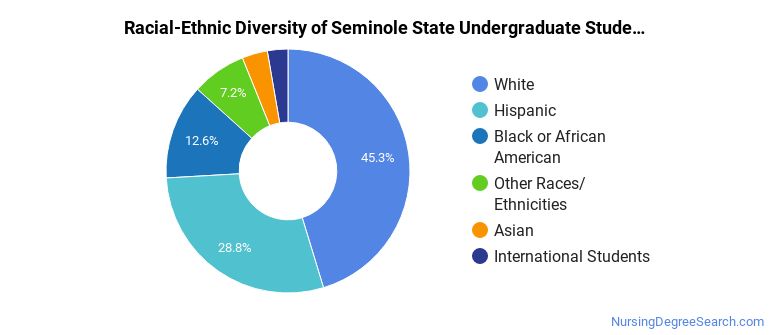Seminole State College of Florida Nursing Programs
Seminole State College of Florida is a public institution situated in Sanford, Florida. The location of Seminole State is great for students who prefer living in an urban area.
Where Is Seminole State College of Florida?

Contact details for Seminole State are given below.
| Contact Details | |
|---|---|
| Address: | 100 Weldon Blvd, Sanford, FL 32773-6199 |
| Phone: | 407-708-4722 |
| Website: | www.seminolestate.edu |
How Do I Get Into Seminole State?
You can apply to Seminole State online at: https://www.seminolestate.edu/apply
Can I Afford Seminole State College of Florida?
Student Loan Debt
Almost 66% of college students who graduated with the class of 2018 took out student loans, but that percentage varies from school to school. At Seminole State, approximately 18% of students took out student loans averaging $4,964 a year. That adds up to $19,856 over four years for those students.
Seminole State College of Florida Undergraduate Student Diversity

Gender Diversity
Of the 5,175 full-time undergraduates at Seminole State, 48% are male and 52% are female.

Racial-Ethnic Diversity
The racial-ethnic breakdown of Seminole State College of Florida students is as follows.

| Race/Ethnicity | Number of Grads |
|---|---|
| Asian | 175 |
| Black or African American | 652 |
| Hispanic or Latino | 1,490 |
| White | 2,344 |
| International Students | 141 |
| Other Races/Ethnicities | 373 |
Geographic Diversity
Florida students aren't the only ones who study at Seminole State College of Florida. At this time, 19 states are represented by the student population at the school.
Over 53 countries are represented at Seminole State. The most popular countries sending students to the school are Brazil, Vietnam, and Venezuela.
Seminole State College of Florida Nursing Concentrations
The table below shows the number of awards for each concentration.
| Major | Associate’s | Bachelor’s | TOTAL |
|---|---|---|---|
| Registered Nursing | 230 | 52 | 282 |
| TOTAL | 230 | 52 | 282 |
References
*The racial-ethnic minorities count is calculated by taking the total number of students and subtracting white students, international students, and students whose race/ethnicity was unknown. This number is then divided by the total number of students at the school to obtain the racial-ethnic minorities percentage.
More about our data sources and methodologies.
